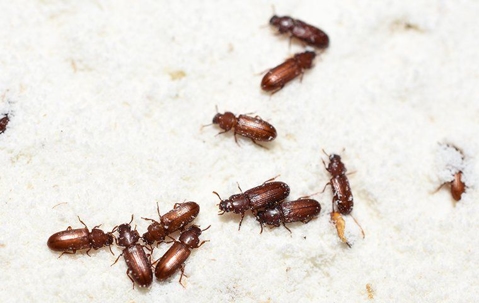How to Conduct a Pantry Pest Inspection in Vancouver: Step-by-Step Guide for Homeowners

Keeping your pantry free from pests is essential for maintaining food safety and avoiding unnecessary waste. Regular inspections help identify early signs of infestation, which can prevent larger problems down the line. Pests such as moths, beetles, and weevils can quickly turn your pantry into a breeding ground if left unchecked. So, it is necessary to find early signs of pest infestations and call experts from Pointe Pest Control to get rid of pests from your pantry.
Follow this step-by-step guide to conduct an effective pantry pest inspection in your home.
The Importance of Regular Inspections
Regular inspections are crucial in maintaining a healthy kitchen environment. They help in early detection of pantry pests, allowing you to take immediate action before the infestation becomes severe. This proactive approach not only safeguards your food supplies but also saves you money by reducing food waste.
Step-by-Step Inspection Guide
Step 1: Gather Your Tools
Before you begin the inspection, gather the necessary tools to make the process efficient:
- Flashlight: To check dark corners and crevices.
- Magnifying glass: To identify small pests and eggs.
- Sealed containers or bags: For storing any contaminated food items you might find.
- Cleaning supplies: For tidying up after the inspection.
Step 2: Clear Out the Pantry
Remove all items from the pantry shelves. This gives you a clear view of the entire space and makes it easier to spot any signs of pest activity. As you remove items, check them for visible signs of infestation.
Step 3: Inspect Food Packages
Carefully inspect each food package, especially those containing grains, cereals, nuts, and dried fruits. Look for:
- Holes or Tears: Small holes in packaging can indicate pest entry points.
- Webbing: Silky webs inside packages are a sign of moth infestation.
- Droppings or Larvae: Small larvae or droppings are common signs of infestation in dry goods.
Step 4: Examine Shelves and Corners
Use your flashlight to inspect the shelves, paying close attention to corners and crevices where pests might hide. Look for:
- Eggs: Tiny, often hard-to-see eggs can be found in cracks and corners.
- Shed Skins: Many pests shed their skins as they grow, leaving evidence of their presence.
Step 5: Check Storage Containers
Ensure that all storage containers are airtight and free from cracks. Pests can easily infiltrate poorly sealed containers, so replace any that are damaged.
Step 6: Clean Thoroughly
After inspecting, clean the pantry thoroughly. Wipe down shelves with a solution of water and vinegar to deter pests and remove any possible food residues that might attract them.
Step 7: Dispose of Contaminated Food
Dispose of any infested food items immediately. Seal them in a plastic bag before placing them in the trash to prevent pests from escaping and spreading to other areas.
What to Do If Pests Are Found in Your Pantry?
If you discover pests during your inspection, take immediate action:
- Isolate Infested Items: Remove and isolate any contaminated food products from the rest of your pantry.
- Use Traps or Natural Deterrents: Consider using sticky traps or natural deterrents like bay leaves to manage smaller infestations.
- Consult a Professional: For severe infestations, it may be necessary to consult a pest control professional to ensure complete eradication.
Preventing Future Infestations
Preventive measures are key to maintaining a pest-free pantry:
- Store Properly: Use airtight containers for all dry goods to prevent pest access.
- Regular Cleaning: Clean your pantry regularly to remove food residues.
- Inspect New Groceries: Check new groceries for signs of pests before bringing them into your pantry.
- Rotate Stock: Use the oldest items first to prevent them from becoming stale and attracting pests.
Conclusion
Conducting regular pantry pest inspections is an essential practice for every homeowner. So, by following this step-by-step guide, you can effectively manage and prevent pest infestations, ensuring a healthy and safe kitchen environment for you and your family.











